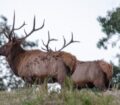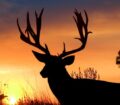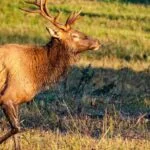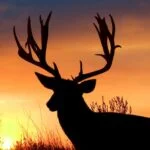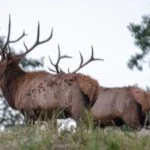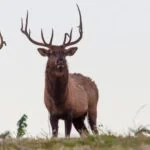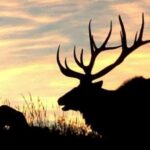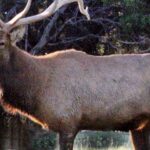Editor’s Note: Brian Mosley from Bloomfield/Farmington, New Mexico, in the northwestern corner of New Mexico, says, “What I like about where I live is I’m 55 miles from Colorado, 1-1/2 to 2 hours from Utah and a 1 hour, 15-minute drive from Arizona. I can drive to any of these states, hunt elk, and go home after the hunt. Plus, if I take an elk, I can return it home quickly. Another advantage about where I live in New Mexico is in Colorado that has some of the most elk in the western states, I can buy an over-the-counter elk tag.” Mosley has been hunting elk for 22+ years and has taken many elk – most with his bow. Mosley’s an avid elk and mule deer hunter but also enjoys being a football and track coach and a strength-and-conditioning coach for students at the junior high and senior high schools for the Bloomfield school system. For Mosley, the challenge of the mountains and hunting elk and mule deer in high terrain is just another day’s workout,
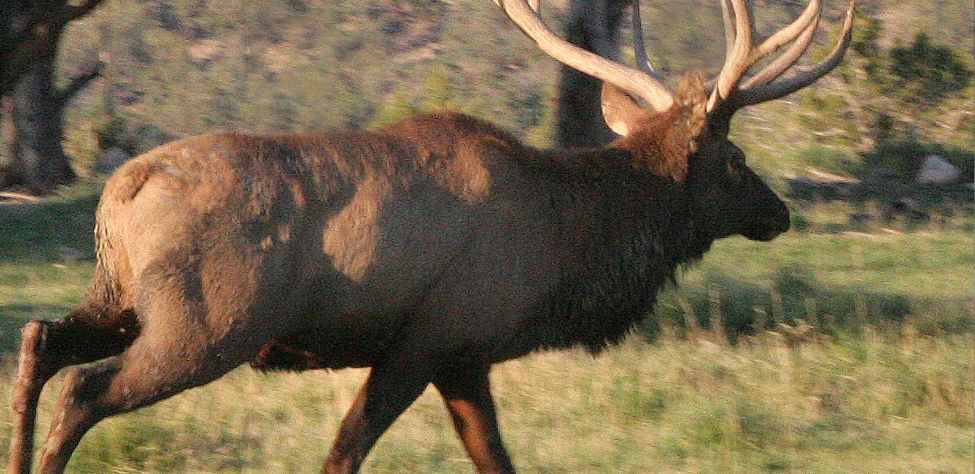
After football practice, I was hunting elk in the unit closest to my house. A guide friend told me he had seen a big bull in a particular area of this unit. So, when I got to the spot where the guide had told me he’d seen this bull, I sat next to a big tree and started cowcalling. I knew I only had 2 hours to hunt before dark. I spotted this big bull and six cows on top of a ridge, then watched that bull walk in front of the cows in his herd and turn them away from me. They went down the back side of the ridge, and I never saw that bull again. To say I was discouraged would be an understatement. I looked to my left and saw a spike bull and a 4×5 bull. I wanted to get the bulls in closer because this was the last day of elk season in New Mexico. I gave a little cow call. The 4×5 bull turned and walked away from me, but the spike bull continued to stand where he was. I ranged that bull at 45 yards, took aim, and released the arrow.
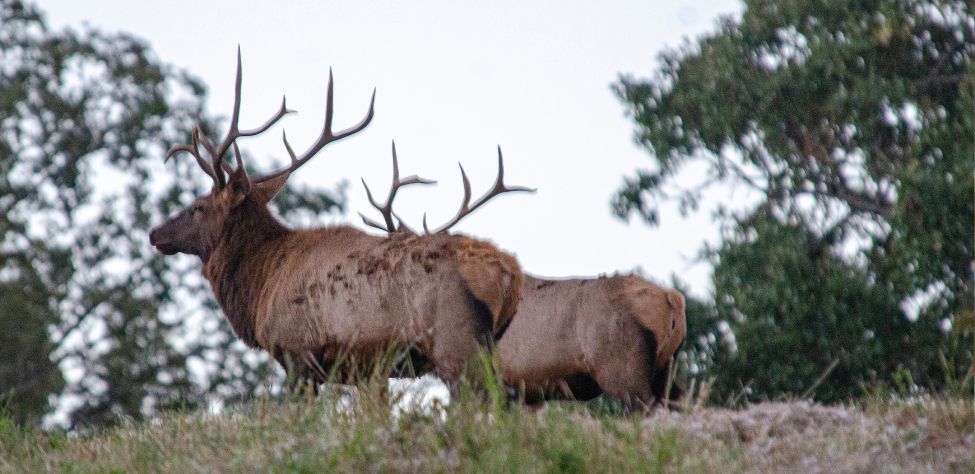
As soon as the elk took the arrow, rain started coming down in buckets full. I knew the rain would wash away the blood trail. So, I started trying to follow the blood trail on that muddy road. If I didn’t leave there quickly, I realized I might not return home. Although I hated to leave the bull overnight, I knew that was my only option. I got to the truck, drove home, and got up the following day. However, when I arrived at the road I wanted to use to try and recover my elk, the road was closed. So, I parked about 1-1/2 miles from where I’d shot the spike and hiked into the region. Believe it or not, I could pick up the blood trail.
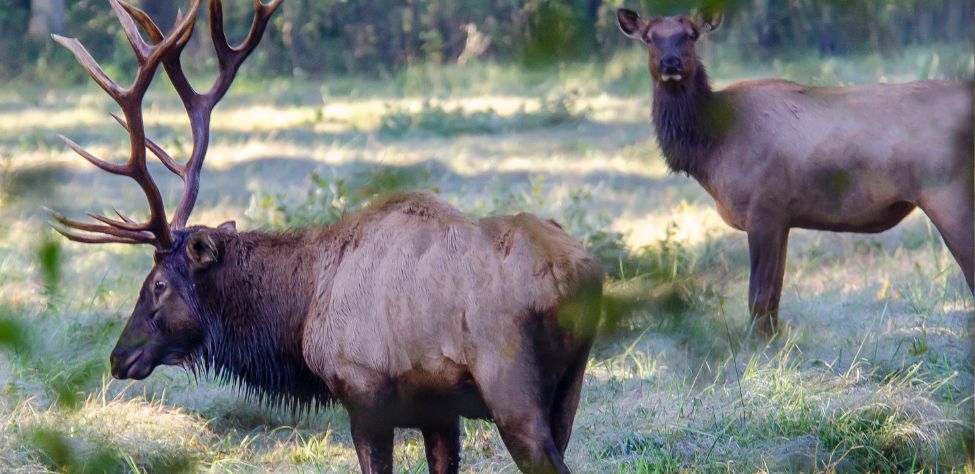
Although I had hit the elk mid-body, I knew my arrow was far back, possibly behind the lungs. As I started on the blood trail, I could see that more and more of the blood had been washed away. So, I followed tracks for another 1 1/2 hours until I finally found my bull. Surprisingly, I located my elk only 25 yards from an open road. This was the first time I hadn’t had to spend 4-8 hours getting my elk and his head back to the truck.
Looking for more content? Check out our YouTube channel and watch “How to Hunt High Pressure Areas” by John E. Phillips.
Expert Guidebooks on Elk Hunting: Best Sellers
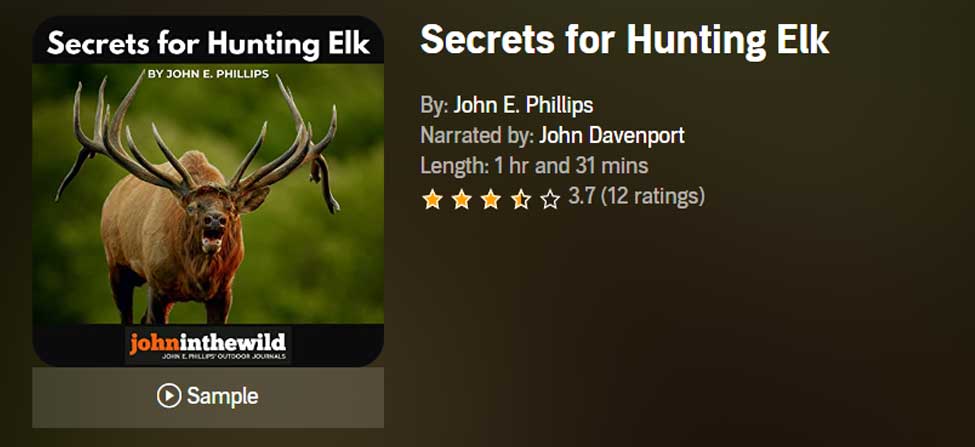
Secrets for Hunting Elk
The quickest, easiest (if there is an easy way), and safest way to find and take that bull elk of a lifetime will be to hunt with a guide.
Chad Schearer, a longtime Montana guide and TV personality, told me, “My hunter is my gun. If I get to the elk, and my hunter isn’t with me, then we don’t take the elk. My job is not only to find the elk but also to help the hunter get to the elk and make the experience as enjoyable as I can for him.” That’s the kind of fella with whom I want to go elk hunting.
An elk hunt can be tough, but it doesn’t have to be so tough that you don’t enjoy it. That’s why this elk hunting book starts with the confessions of an elk guide and with Chad Schearer’s philosophy of what the guide and the hunter’s relationship should be.
A good portion of your success will depend on your physical condition, and Matt Morrett of Harrisburg, Pennsylvania explains how an eastern hunter can get ready physically during June and July to hunt western elk, the animals he describes as, “Like deer or turkeys on steroids.”
Wayne Carlton, well-known elk hunter and TV and video personality from Montrose, Colorado, tells us what types of elk calls to use and what to say to the elk. Mike Miller of Colorado, another elk guide and Mossy Oak video personality, has tactics for the best equipment for bowhunting and gun hunting elk.
You’ll learn helpful strategies and hunting tips in this book, as well as some straightforward hunting methods that will help to make your elk hunt more successful.
“Thanks to the advice in your elk hunting books, I was able to call up a nice 6-point (6X6) bull elk! He was bugling like crazy. I called him in from about a ¼ mile away. Called him into bow range (about 40 yards away). It was a thrill!” ~Rob Brannon
VERSIONS: AUDIBLE & KINDLE
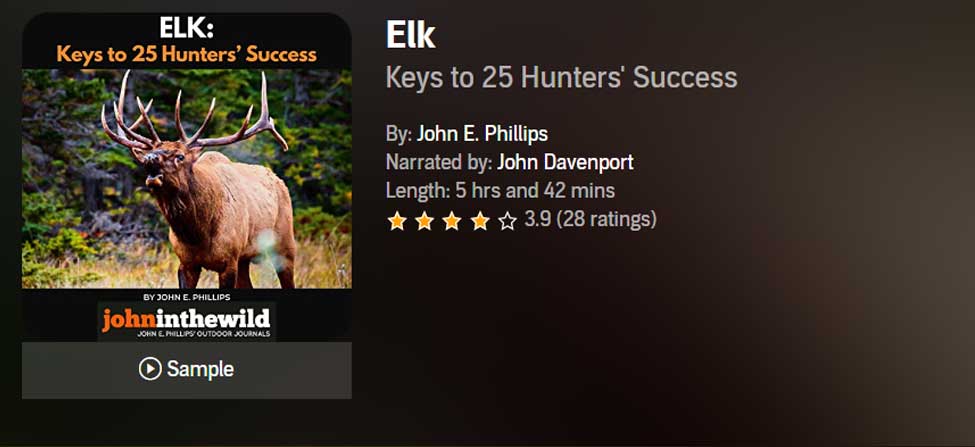
Elk: Keys to 25 Hunters’ Success
Often just one tip or tactic makes the difference in whether you take an elk home to dinner or have to hike back to the truck by yourself. In John E. Phillips’ latest elk book, Elk: Keys to 25 Hunters’ Success, you’ll learn from successful elk hunters the strategies they use to find and take elk.
Many know that the technique that seems to work most often is to hunt where other elk hunters don’t and understand where the elk are before you go on a hunt by studying data from each state, visiting HuntData (see chapter 1), examining maps, and reading postings on elk forums.
This book also tells you how to get ready physically for an elk hunt, including participating in Train to Hunt Competitions, what gear you need to take, how to enjoy a successful do-it-yourself elk hunt, or how to pick the best elk guide for you. You’ll also hear about the X System and the Broken Y System of hunting elk.
Although no one person has all the answers on how to help you find and take your elk, I’m convinced that this book’s outdoors men and women will teach you how to have satisfying elk hunts.
As my friend Karl Badger once told me, “Elk hunting doesn’t get any better than when I ride horses into the high backcountry, see two grizzly bears, hear a pack of wolves howl close to camp all night long, eat plenty of delicious food prepared on a fire and enjoy the company of good friends.”
VERSIONS: AUDIBLE, KINDLE & PRINT
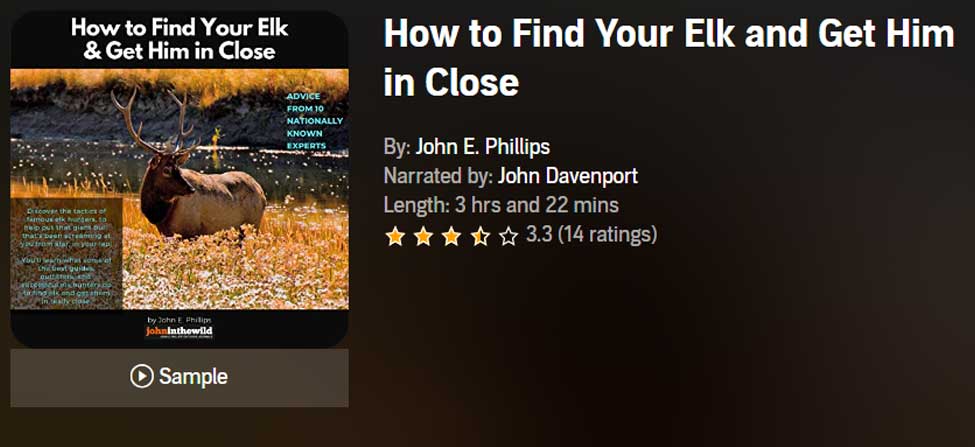
How to Find Your Elk and Get Him in Close will teach you the tactics of 10 nationally known elk hunters, to help put that giant bull that’s been screaming at you from afar, in your lap. You’ll learn what some of the best guides, outfitters, and successful elk hunters do to find elk and get them in really close.
Also in this audiobook, you’ll notice that the majority of the experts call elk to within bow range. We selected numerous bowhunters and bowhunting guides, since the bowhunter has to get much closer to a bull than the gun hunter does – often less than 20 or 30 yards – practically in your lap.
On one elk hunt, I’d heard this bull bugle all morning. My guide had called him within 30 yards, and he was standing just inside black timber. I saw the smoke from his nose wafting out into the icy air less than 30-yards away. All the bull had to do was step out, and I could take the shot with my bow. But then, through no fault of my guide or me, the bull vanished.
The only conclusion I could come up with to understand why the bull I wanted to take with my bow hadn’t stepped out and given me a shot, was because he got raptured. He evidently had left the earth with no trace of himself.
This hunt was when I started wanting to learn more about hunting elk up close. In this book, I’ve tried to find some of the most knowledgeable, experienced, and practical elk hunters. I’ve always found that the best way to learn any outdoor skill, is to either hunt or fish with the best sportsmen in that field.
Often, in elk hunting, that means elk guides, who generally hunt every day of the season and receive a salary for every hunter they guide. So, I’ve put together a group of some of the best elk hunters I know to help us all learn how to find bull elk and get them in close.
VERSIONS: AUDIBLE, KINDLE & PRINT
Tomorrow: The Game Day Mule Deer

